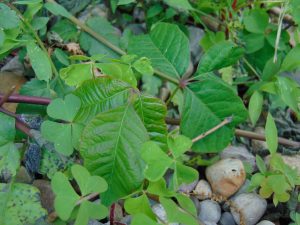This article was first published in the Oct. 9, 2017 edition of The Journal.
The most relaxing place I know is a ridge top in October that overlooks a deciduous forest. That place is where I can find inner peace. With a good cup of coffee in one hand and an excellent book in the other, that is my place of solitude. So today, I will pay homage to the leaf pigments that create the splendid colors of October.
Deciduous trees are those which drop their leaves in autumn. Before the leaves drop, a color change occurs. The leaves of some trees turn a crusty brown. It gives the illusion that the leaf has simply died and will drop, but it is really more complex than that.
Within the leaves are a complex combination of pigments. Usually the pigment that is most apparent in the spring and summer is chlorophyll. It is responsible for green leaves. Therefore, when leaves begin to change it is the sign that chlorophyll is breaking down (due to fewer hours of sunlight during the day) and we see a color change. Where do the other pigments come from?
The other pigments were there all along, we just couldn’t see them. If chlorophyll was the dominant pigment, we only saw green. When chlorophyll declines, the other pigments are expressed. Carotene and xanthophyll pigments exhibit yellow colors. Anthocyanin pigments are responsible for reds and purples. In acidic conditions red is widely expressed and in alkaline conditions blue is expressed.
The combinations of these pigments vary from species to species, tree to tree, and even leaf to leaf. They create the lovely variety of fall colors so many of us enjoy this time of year. In wet years, you may see more reds and purples. In dry years, you may see more yellows and oranges. This is because anthocyanin pigments are water soluble.
A great local place to observe the autumn scenery is the Eastern Agricultural Research Station in Belle Valley. On a clear day from the overlook at the top of the ridge, you can see for miles. I encourage you to come and see.
A great time to do that would be at Beef and Grazing School, which continues on Tuesday, October 10 and Tuesday, October 17. Both programs run from 5:30-8 p.m. If you would like to know more details about these events, please call 740-732-5681.









![bagworm[1]](https://u.osu.edu/bhanr/files/2015/07/bagworm1-1eye5cs.gif)
